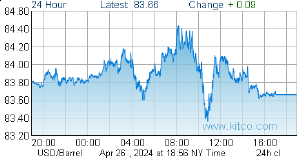With additional drill results imminent from Prosper Gold Corp.’s (PGX, TSX-V) Sheslay Cu-Au Porphyry Project in northwest British Columbia, it’s an ideal time to put more facts on the table that clearly demonstrate why the Sheslay holds such great potential in terms of both grade and tonnage. Keep in mind as you read this, PGX’s current market cap (based on Friday’s 50-cent close) is $12.5 million, a mere 6% of the $219 million commanded by Copper Fox Metals Inc. (CUU, TSX-V) which holds 25% of a JV with Teck Resources Ltd. (TCK, TSX) to further develop the Schaft Creek deposit approximately 120 km southeast of Sheslay.
Schaft Creek, 1 of several Stikine Arch deposits that Sheslay could soon rival, has proven and probable reserves of 940 million tonnes grading 0.27% Cu, 0.19 g/t Au, 1.7 g/t Ag and 0.018% Mo according to a February 2013 feasibility study (5.6 billion pounds Cu, 5.8 million ounces Au, 52 million ounces Ag, 364 million pounds Mo). Measured and indicated resources are 1.2 billion tonnes grading 0.26% Cu, 0.19 g/t Au, 1.7 g/t Ag and 0.017% Mo. Inferred resources are 597 million tonnes grading 0.22% Cu, 0.17 g/t Au, 1.7 g/t Ag and 0.016% Mo. So this is a large system. They’re using a cut-off of 0.15% CuEq. It is generally regarded as a primary porphyry Copper system, hosted in the intermediate rocks of the Stuhini Group, in a similar geological setting as the Sheslay. Significant argillic alteration and a distal pyrite halo are notably absent at Schaft Creek, however.
Schaft Creek, where exploration started in the 1950’s, comprises 2 distinct and spatially separate zones – the Main Zone and the Paramount Zone. The Main Zone extends up to 1.1 km east-west and more than 1.2 km north-south with a depth of approximately 300 metres. Paramount is a contiguous zone of breccias extending along the west margin of the Main Zone and to the north for a total length of at least 2.1 km. It’s not quite as wide as the Main Zone but extends a little deeper (to 500 metres). The total project area is about 3 km x 3 km.
Just over 400 holes (about 10 x more than the Sheslay) have been drilled at Schaft Creek totaling 98,000 metres, not including the drilling carried out by Teck this summer.
The Sheslay
Let’s move ahead now to the Sheslay and hopefully our readers, though this comparison with Schaft Creek, can further appreciate the attractiveness of this project and how, at this stage at least, it appears to have better grade potential and the same or even better tonnage potential than Schaft Creek. Quite frankly, the only reason the Sheslay is at a less advanced stage than Schaft Creek is because the former was in the “wrong” hands for the last 10 years. Firesteel Resources (FTR, TSX-V) gave it their best, but they lacked the geological expertise and the financial strength to seriously advance this highly prospective asset. Smartly, they finally recognized that. One of the best exploration groups in the country is now taking the Sheslay – rapidly – to the next level. Prosper Gold examined at least 150 properties around the globe before deciding on this one (that says a lot).
A minimum of 4 Cu-Au porphyry targets have been identified at the Sheslay within a 12 sq. km area – the Star (most advanced), North Star, East Star and Copper Creek. Approximately 5 km southwest of the Star is the Pyrrhotite Creek porphyry which appears to be a distinct, multiple target area with a 2,000-metre long, 400-metre wide Copper-in-soil anomaly with elevated Mo values.
The Star target, based on historical geophysical, geochemical and drill data, covers an approximate 700 m by 500 m area. The discovery is open to depth and extension laterally in all directions beyond this confirmed area. Mineralization is not restricted to specific rock types. Both the porphyry and bounding volcanic rocks are mineralized.
Prosper Gold’s first 3 drill holes at the Star delivered excellent numbers, confirming historical results – 312 m grading 0.37% Cu and 0.24 g/t Au (S024); 269 m grading 0.42% Cu and 0.20 g/t Au (S025); and 263 m grading 0.35% Cu and 0.15 g/t Au (S026). Their 4th, 5th and 6th holes (assays pending) pushed deeper, and mineralization was intersected from top to bottom (598 metres) in the 4th hole (S028). This particular hole could be a game-changer (same with the other 2 holes) and should provide valuable insight into the depth potential of the property. Previous drilling at Sheslay was relatively shallow – almost entirely to depths not exceeding 250 m. If Prosper, by drilling deeper, has hit a magnetite-enriched potassic zone, look out. That’s where grades could really ramp up. All the evidence to date suggests there is a robust hydrothermal system at the Sheslay, one that’s capable of cooking up some juicy numbers.

PGX's Sheslay covers nearly 70 sq. km and features a minimum of 5 Cu-Au porphyry targets - the Star (most advanced), North Star, East Star, Copper Creek, and Pyrrhotite Creek.
How Tonnage At Sheslay Could Quickly Grow
Given the dimensions of the 2 Schaft Creek mineralized zones as noted above, it’s not hard to imagine how tonnage could build exponentially if Prosper is able to link even just 2 of its targets – the Star and the North Star. The North Star is 1 km to the northeast of the Star and has never been drill-tested or trenched. However, historical work indicates a strong IP chargeability anomaly and corresponding magnetic high covering a minimum 500 m x 700 m area with a coincident Copper-in-soil anomaly (individual soil sample results above 1% Cu) and Gold-in-soil anomaly. The 1 km gap between the North Star and the Star is open, and historical anomalous Gold-in-soil results suggest a possible link between the 2.
The East Star is 1 km southeast of the Star, while Copper Creek is 2.3 km south of the Star. Again, 4 porphyry targets clustered within a 12 sq. km area. If they all link up, this would be an absolutely huge system – and that’s not even counting Pyrrhotite Creek which has incredible potential just on its own.
“We just think this thing has a lot of room and a lot of legs to get bigger,” PGX President and CEO Pete Bernier told BMR in an interview last month. “It’s looking very good. It’s a big area. It looks like it could extend outward quite a bit. The gossans in the area are phenomenal from the air. So we just think this has got a lot of room to grow. And they never drilled it to depth.”
Yes, those gossans. Below is one of them – definitely a good sign.

Bernier’s Brigade and “Captain Dirk”
In the risky junior exploration space, if you’re going to bet on a company making a major discovery, make sure the people running that company and directing everything on the ground know what they’re doing. Lots of companies have great properties but lack either the money-raising ability or the geological expertise – or both – to deliver success and build shareholder value. Ask yourself these key questions:
1. Does the company have enough working capital and the ability to raise lots more?
2. Does the company have true and proven expertise at both the management and geological levels?
3. Does the company have an attractive share structure (have they flooded the market with paper?)?
4. Does the company have a property (or properties) with legitimate potential where a discovery could be made, in a safe jurisdiction, that a major may want to buy?
5. Does the company have the ambition and the determination to build shareholder value, especially in the current environment in which so many CEO’s are hiding their heads in the sand and don’t seem to even care about shareholders – let alone taking on the challenging task of building value in the ground and in the market?
6. Does the company fit into the top 10% of Venture listings, or is it one of the 90%?
In the case of Prosper Gold, the answer to each of those questions is a resounding “Yes” (the same, by the way, applies to Garibaldi Resources – GGI, TSX-V – which is also the largest landholder among juniors in the rapidly developing Sheslay Valley camp).
Bernier and his chief geologist, Dr. Dirk Tempelman-Kluit, are of course coming off a huge win 2 years ago with Richfield Ventures which soared from pennies to more than $10 a share after getting taken out by New Gold Inc. (NGD, TSX) for just over half a billion dollars. Bernier is running with the same team he had with Richfield, and has also added a couple of key recruits.
Tempelman-Kluit, meanwhile, is unquestionably one of the brightest geologists in the country. If there’s anyone who can bring the attention of the world to a major discovery in the Sheslay Valley, it’s “Captain Dirk”. At 74 years of age, he’s in incredible shape and as motivated as ever with experience and wisdom on his side. For 2 years, as he explained to BMR in a recent interview, he and Bernier searched for the ideal project before settling on the Sheslay (click on the forward arrow to listen to this 2-and-a-half-minute excerpt of Jon’s interview with Dirk – requires Adobe Flash Player, version 9 or above):
[audio:https://e8d59e.a2cdn1.secureserver.net/wp-content/uploads/2013/09/Dirk-PGX-Clip-11.mp3|titles=Dirk PGX Clip 1]Assay results from Prosper Gold’s first 3 holes came out September 30. We’re now into the last half of October and 3 more holes are due. Two-thirds of the outstanding shares (25 million) are locked up at the moment and can’t be sold. Mineralization from surface to 598 metres in hole #4 (S027). Suffice to say, things are about to get very interesting. As always, perform your own due diligence.
Note: Jon holds share positions in both PGX and GGI while John holds a share position in GGI.
 BullMarketRun.com
BullMarketRun.com








